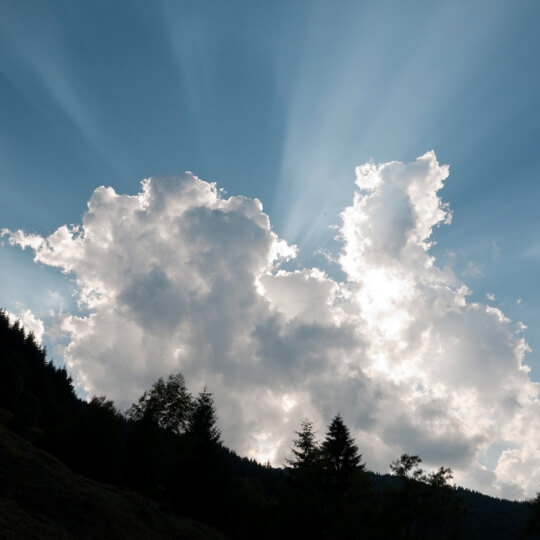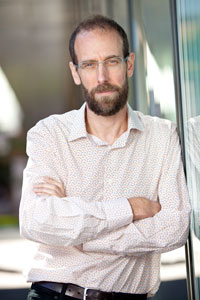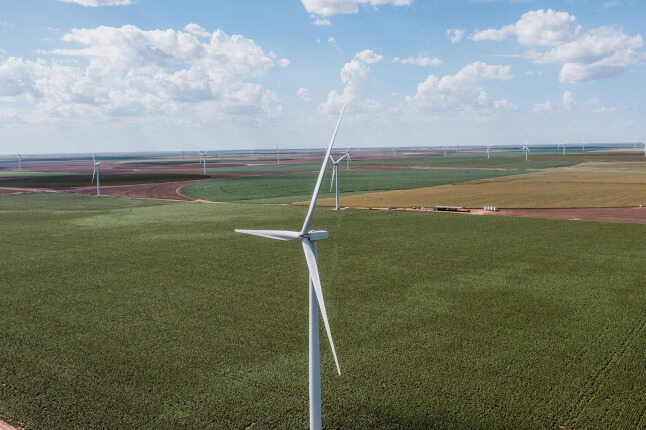News
Geoengineering experts David Keith and colleagues quantitatively exmained solar radiation management as a way of reducing global climate change. (Image courtesy of Flickr user Horia Varlan.)
November 4, 2011 – Let there be no doubt: sun blockers and cloud-seeding machines exist only in the future, in hypotheticals and backup plans.
But the threat of damaging climate change is near enough that geoengineering experts are starting to quantitatively weigh the options.
Environmental scientists have long wondered whether the benefit of global interventions such as generating more clouds or reflecting the sun’s rays back into space would overwhelm the risks.
Now a team of researchers from Harvard University, California Institute of Technology, and the Carnegie Institution for Science have developed a plan to quantify and model the effects of solar radiation management (SRM). The study appears in the October 20 issue of Energy and Environmental Science.
“To take geoengineering methods like solar radiation management seriously, we need to build realistic models,” says co-author David Keith, Gordon McKay Professor of Applied Physics at the Harvard School of Engineering and Applied Sciences (SEAS) and Professor of Public Policy at the Harvard Kennedy School. “The aim of our study was to create a framework to better understand what might be learned through testing. I do not believe that large-scale testing makes sense now."
The study investigates techniques for reflecting sunlight back into space, including increasing the amount of aerosols in the stratosphere or creating low-altitude marine clouds, which could scatter incoming solar heat away from the Earth’s surface.
The researchers turned to the Hadley Centre Coupled Model, version 3 (HadCM3L), a general circulation model of the atmosphere-ocean, for their simulations of SRM’s possible effect on the planet.
“Our goal was to examine the all-or-nothing assumption common in studies of SRM, by using climate models to find out if a limited test of SRM could be detected in the face of natural climate variability,” said Keith. “Our results suggest that it should be possible to turn SRM on slowly—looking carefully for unexpected side-effects—before committing to full-scale use.”
Because of the size and the intricacies of the many atmospheric and climate processes involved with realizing SRM, however, examining its potential viability is extremely difficult.
The team has demonstrated that smaller-scale tests of solar radiation management could help inform decisions about future larger-scale deployments. Short-term tests would be particularly effective at understanding the effects of geoengineering on fast-acting climate dynamics.
Thorough testing would require several decades of research and, even then, would need to be extrapolated out to the centuries-long time scales relevant to studying climate change.
“While it is clearly premature to consider testing solar radiation management at a scale large enough to measure the climate response, it is not premature to understand what we can learn from such tests,” said lead research Doug MacMynowski, a Senior Research Associate at the California Institute of Technology. “Moreover, we still need to consider other important questions such as the necessary testing technology and the social and political implications of such tests.”
Climate scientists have also theorized that volcanic eruptions could stand in for tests, as they would cause same types of atmospheric changes as aerosols, they would not be as effective as a sustained test.
“No test can tell us everything we might want to know, but tests could tell us some things we would like to know,” says co-author Ken Caldeira at the Carnegie Institution for Science. “Tests could improve our understanding of likely consequences of intentional interference in the climate system and could also improve our knowledge about the climate’s response to the interference caused by our carbon dioxide emissions.”
This article was based on an original press release from the Carnegie Institute of Science (used with permission).
##
Ho-Jeong Shin of the Carnegie Institute of Science also contributed to the study. The authors acknowledge the NCEP Reanalysis data provided by the NOAA/OAR/ESRL PSD, Boulder, Colorado, USA, from their Web site at http://www.esrl.noaa.gov/psd/.
Related Videos
Topics: Environment, Climate
Cutting-edge science delivered direct to your inbox.
Join the Harvard SEAS mailing list.
Scientist Profiles
David Keith
Associate in Environmental Science and Engineering




